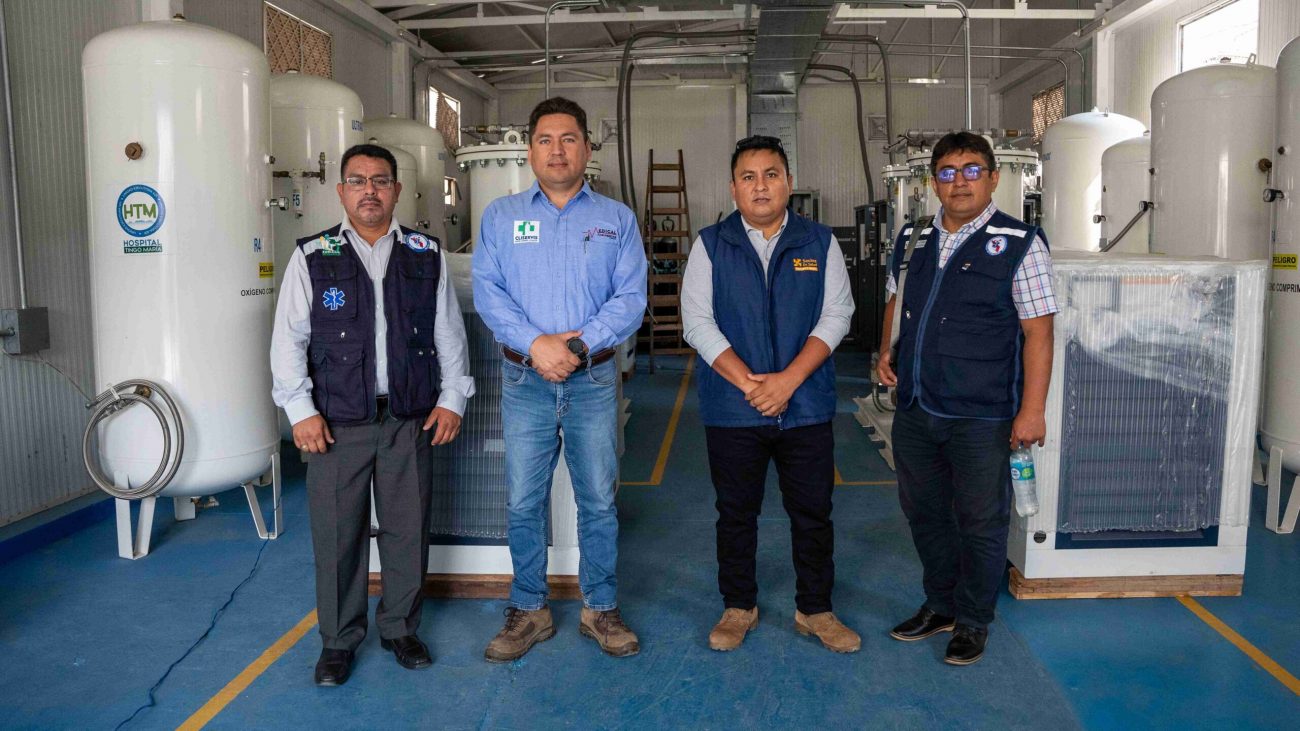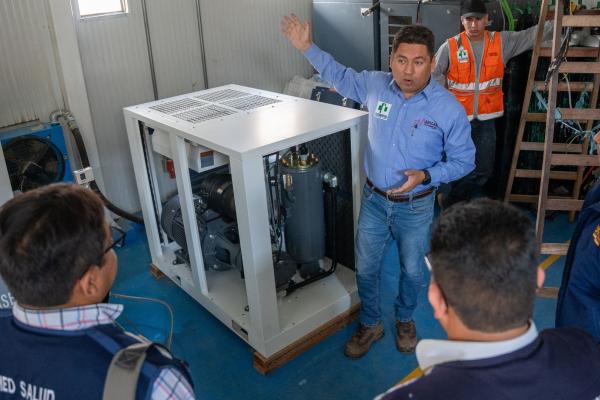The COVID-19 pandemic highlighted the relevance of medical oxygen, as well as the fact that health facilities must have oxygen ecosystems functioning correctly and in a timely manner for the population.
However, the gaps faced by the Peruvian healthcare system mean that this is not always a reality. It is estimated that more than half of the oxygen plants in MINSA health facilities are out of order or outright shut down.
Thus, as part of Partners In Health’s (PIH) global Bring O2 initiative, Partners In Health initiated an immediate response that was born during the pandemic and is still active: ensuring the production, distribution and sustainability of medical oxygen in oxygen plants in at least 7 different regions of the country.
One of them, Huanuco, where the second level of care Tingo Maria Hospital is located.
SES went there to evaluate the hospital’s two oxygen plants and confirm a worrying reality. The first plant, which had been installed in April 2020, was inoperative due to lack of preventive maintenance in the air compressor; the second, although operational, presented failures due to overheating in its filling compressor (also called Booster).

Eng. Miguel Paredes de la Flor (representative of the company Cliservis, specialized in medical oxygen systems), Eng. Jean Franco Bravo (coordinator of the SES Bring O2 project), and Iván Delgado (executive director of the Tingo María Hospital).
This limitation meant that the oxygen supply to the ICU and ICU COVID areas of the hospital depended exclusively on line 01 of the second oxygen plant, while line 02 was used to fill oxygen balloons.
Also, of the 206 oxygen outlets available, only 29, all located on the first level of the hospital, were operational. The remaining 177, distributed on the second, third and fourth levels of the facility, were being wasted despite being in good condition, because, due to problems with the functioning of the elevator and lack of a ramp, the care areas on these levels were not operational.
In response to this problem, SES performed corrective maintenance on the two oxygen plants at the Tingo María Hospital and it was identified that it was not feasible to repair the compressors, so the decision was made to purchase three scroll compressors.
“This involved an evaluation of the capacity of the plant, as well as the procurement management to be able to have the appropriate equipment for the conditions of use that the health facility currently has,” says engineer Jean Franco Garcia, coordinator of the Bring O2 project.
On the other hand, Iván Delgado Tuesta, executive director of the Tingo María Hospital, highlights the benefits of this implementation with a focus on the three ICU areas of the facility.
“The impact [of Socios En Salud] is great, many of the patients who arrive [to the ICU areas] require this type of specialized care, where the issue of oxygen in a fluid and permanent manner is fundamental,” he says.
Finally, to ensure the effectiveness over time of these measures, up to three preventive maintenances have been programmed in the hospital’s oxygen plants. This contributes to making the main objective of this intervention, which is the construction of reliable, integrated and new generation oxygen systems, a reality in Tingo Maria for the benefit of the community.
